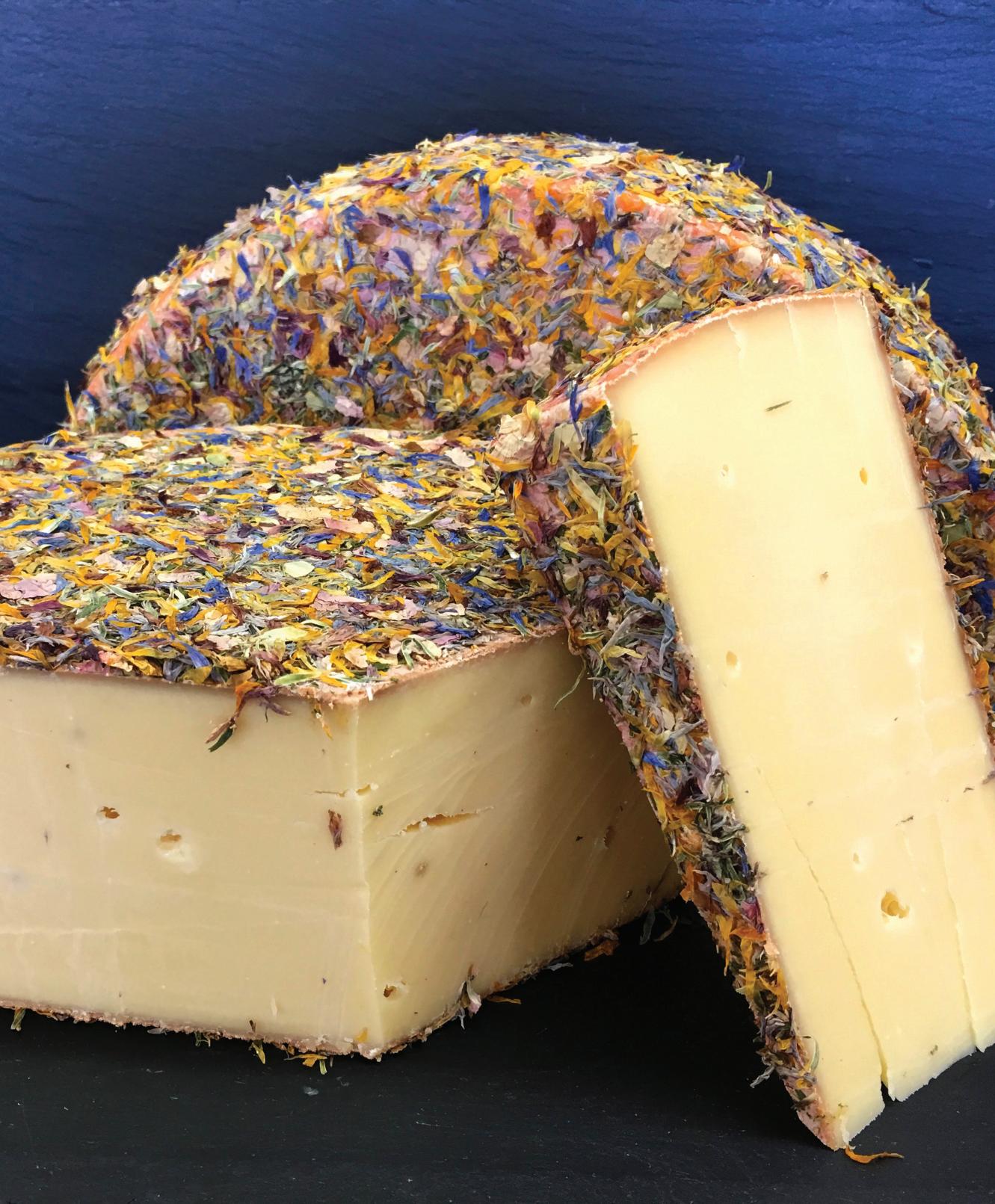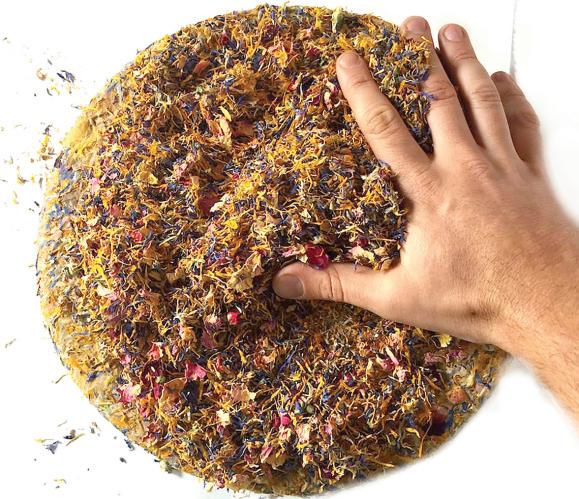
4 minute read
The Cheesemonger Alp Blossom, Appenzeller
from INK MAGAZINE
The Cheesemonger
Paul Partica, The Cheese Shop, Centerbrook CT
Alp Blossom & Appenzeller
Alp Blossom from Austria
M\y first impression of this cheese back in 2017 is what a perfect match for spring! This beautifully garnished cheese is covered in rose petals, cornflower, marigold, lavender, parsley, marjoram, celery herb, oregano, lovage, savory, chive, fennel, chervil, onion and, let’s not forget, chili. At first, I was a little hesitant to inventory this cheese. Though the cheese was colorful and eye catching I feared that many might be more purist in nature and not be willing to try it.
I couldn’t have been more wrong. People were immediately attracted to Alp Blossom and asked to try it. There was no hard sale here. The majority of people who tried it bought it. We only bought a single wheel to try and, to my dismay, we sold out in a few hours.
The idea behind the cheese, according to Columbia Cheese, the importer, is to celebrate the diversity of the Alpine Flora throughout the so-called Hay Belt. This area spans Eastern Switzerland, Southern Germany and Western Austria.
The cheese is made at a co-op called Sennerei Huban founded in 1901 in the Austrian state of Vorarlberg. The producer is Hans Kempf, the head cheese maker who has worked there for fourteen years. This co-op is made up of thirty-four dairies with an average herd size of fifteen cows. The cows are all the Brown Swiss breed which are known for smaller milk yield but higher butterfat content. This makes them ideal for cheese making. They are fed on fresh pasture and hay year-round.
After the first six months at Sennerei Huban the cheese is transported to a cave in Kaeskuche in Bavaria. The local Alpine meadows found here supply the covering of all the beautiful, colorful dried edible flowers and herbs.
Alp Blossom is made from raw milk, and is a member of the washed rind family. Unlike soft-ripening cheeses that have a white bloomy mold sprayed on them, this type of cheese gets washed with a different mold made up of B-linen bacteria. Then it ripens in a moist room where the washed rind develops. This creates a more pungent and flavorful exterior. There are two types of washed rind cheeses. Soft, young examples are Limburger, Chaumes, Epoisses, Livarot, Munster, Stinking Bishop, Grayson, Pont l'Eveque, Von Trapp Oma and Arethusa Diva. Harder types are Swiss Gruyere, Challerhocker, and Appenzeller. This sticky exterior allows for the adhering flora to attach.
In addition to the raw milk and the flowers and herbs, the cheese contains salt, cultures, and rennet. The texture is semi firm and has a strong aroma present. The cheese is available year round.
I was very pleased with the initial acceptance of Alp Blossom. My fear of a possible short shelf life due to the flora coating was quickly put to rest. Appenzeller Extra from Switzerland
I mention this cheese because if you like Alp Blossom you will most likely enjoy Appenzeller. The main difference is that instead of an exterior coating of herbs at the end of aging, a ten day bath made up of herbs and white wine is used in the beginning of production.
Appenzeller cheese dates back over 700 years. It is also a cow’s milk cheese made from raw milk and truly natural with no preservatives or additives. The spicy flavor comes from the closely guarded secret herbal bath it’s given during that beginning production. According to the official Appenzeller web page, the exact ingredients of the original herbal brine involves a mixture of over 25 different herbs, roots, leaves, petals, seeds, and bark. The recipe is enhanced by the fact that the cows graze on lush herbal grasses and fresh hay, never silage. Great care is given to the animals. The cows are given regular and frequent visits to the grazing fields so everything can be as natural as possible for them, even in winter.
There are several Appenzellers to choose from. All are made from untreated raw milk. Most contain 48% fat in dry matter, which is specifically measured to ensure consistent taste. There are two other versions, a mild low fat cheese and a spicy low fat version. I have not seen them available in the United States. A slight eye formation is possible but it is common for the cheese to be void of holes. They weigh approximately 15 to 16 pounds and they all have a dated certificate found as a wrap or label to show proof of quality and production.
My favorite is the Appenzeller Extra. This version is aged longer for enhanced flavor. I feel it is so much better that I do not stock the younger cheese unless the extra is not available. Only 2.5% of Appenzeller production becomes extra. This cheese is not usually stocked by my suppliers so I have to order it well in advance so they can bring it in from Switzerland.
It’s a great eating cheese as well as a great cooking cheese. It can improve the taste of a great fondue and can be used in all of the usual gruyere dishes such as quiche, French onion soup, etc. The cheese has a nice full, rich, spicy flavor and it really enhances any cheese tray. It also has a great shelf life.
Both cheeses are great. They are worth the hunt.
Paul Partica, The Cheese Shop www.cheeseshopcenterbrook.com





